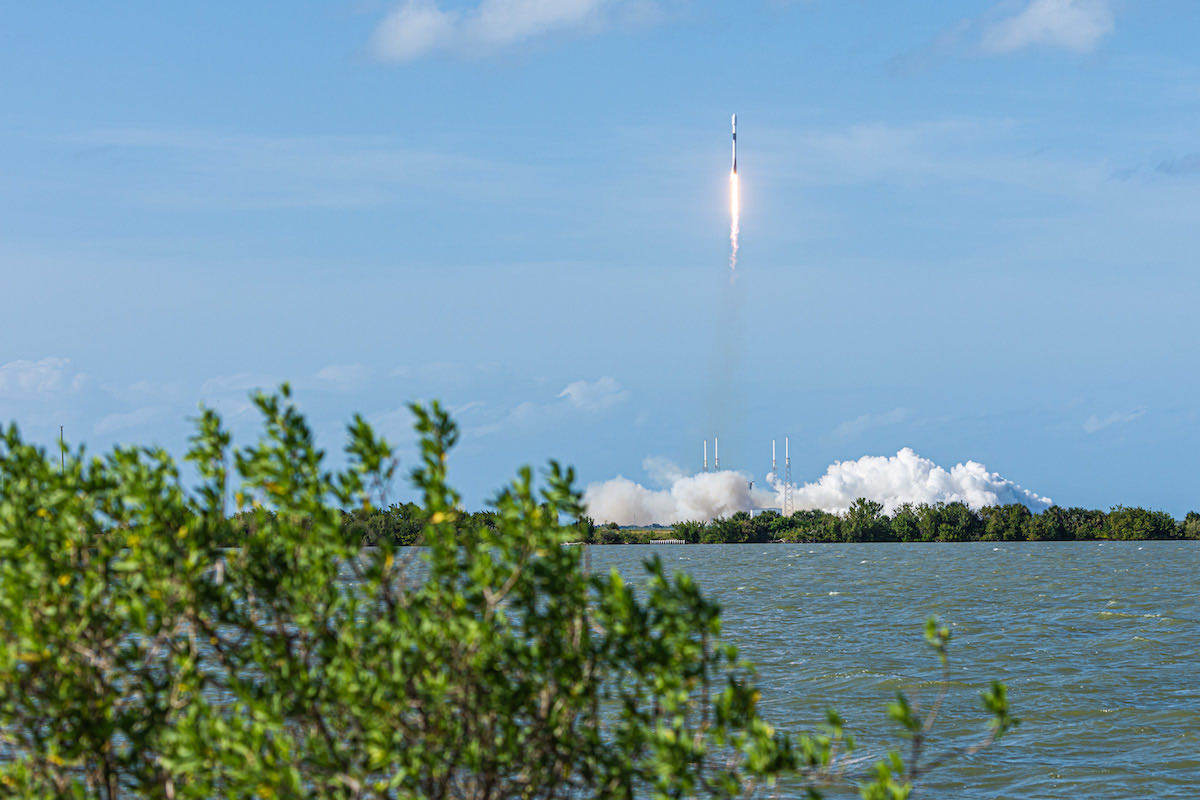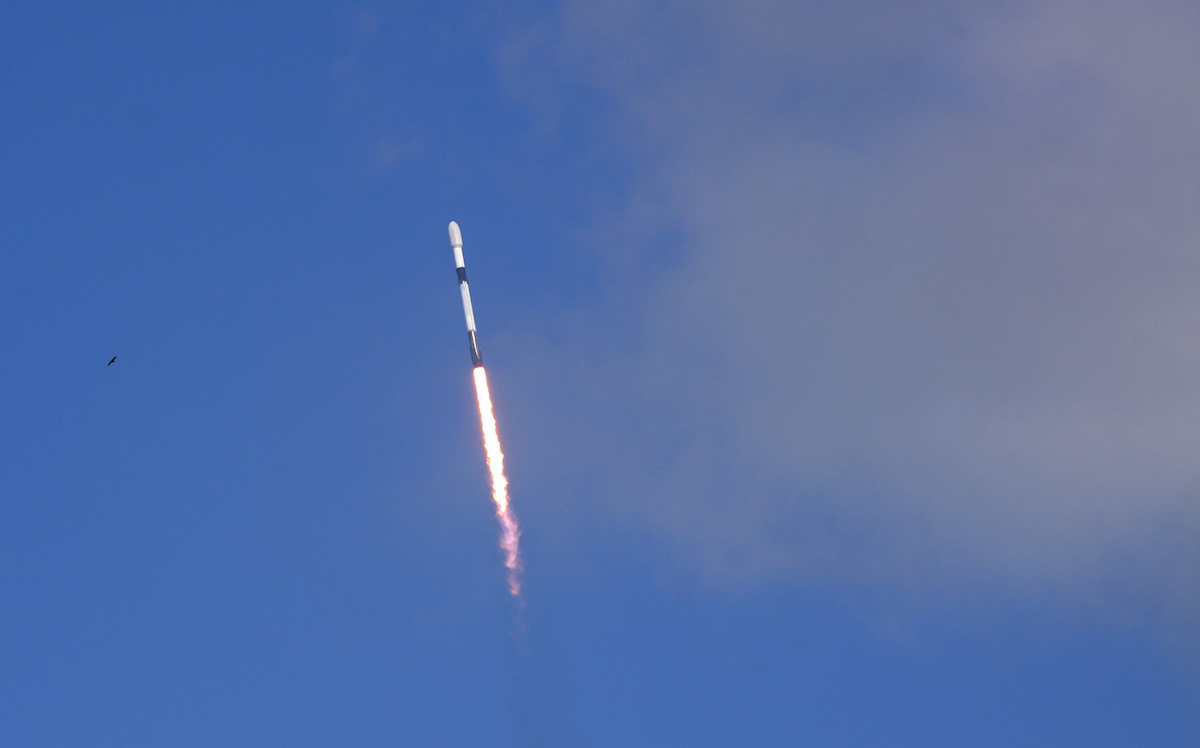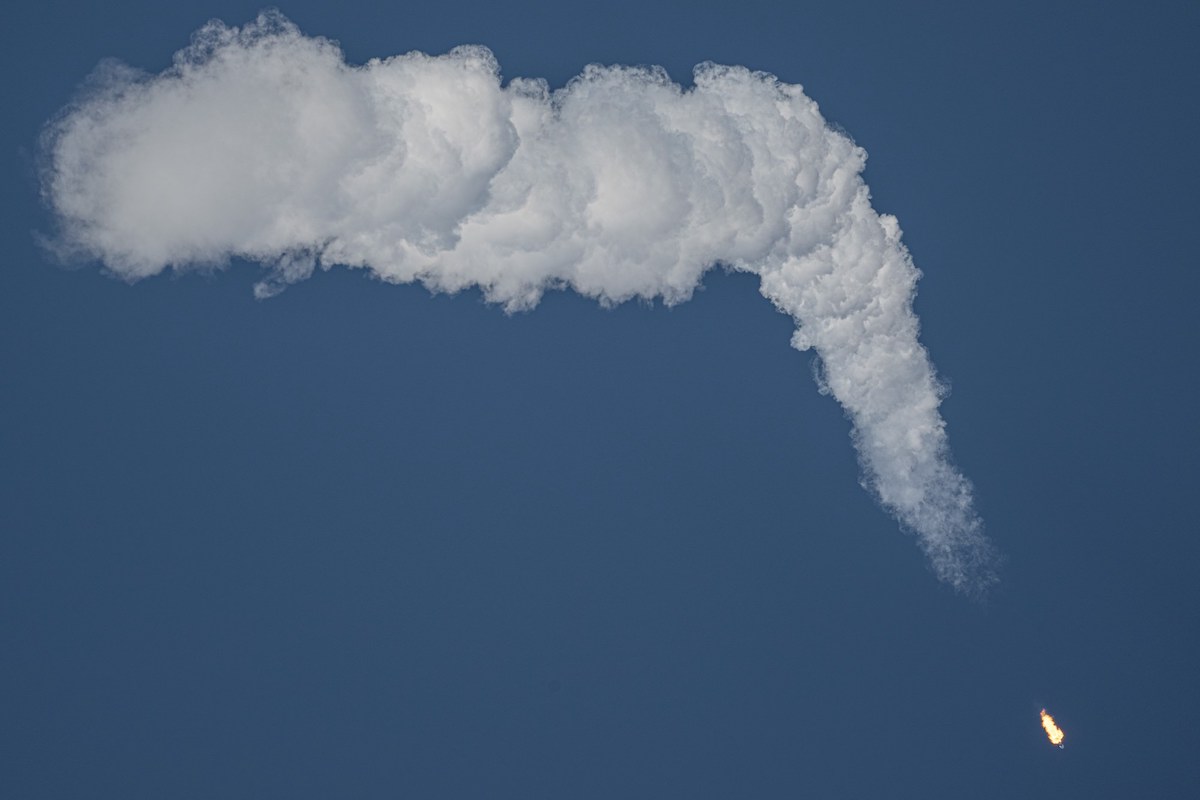
SpaceX continued throttling up its launch rate with another Starlink mission from Cape Canaveral Friday, completing a rapid recycle with a Falcon 9 first stage booster flying for the second time in 21 days.
The mission Friday — designed Starlink 4-16 — was be the 151st launch of a Falcon 9 rocket since SpaceX debuted its workhorse vehicle June 4, 2010, and the 43rd Falcon 9 flight primarily dedicated to hauling Starlink internet relay stations into orbit. The launch was SpaceX’s 17th mission of the year, and the sixth Falcon 9 launch in April, SpaceX’s most ever in a single month.
SpaceX has ramped up its launch cadence this year. Elon Musk, the company’s founder and CEO, has said SpaceX aims to complete 60 Falcon 9 and Falcon Heavy flights in 2022, nearly double the 31 missions accomplished last year. The launch rate is sustained by SpaceX’s reuse of rocket boosters and payload fairing shells. Just one of the 17 Falcon 9 flights so far this year has used an all-new rocket.
The booster that flew on Friday’s mission — tail number B1062 — landed on SpaceX’s drone ship “A Shortfall of Gravitas” in the Atlantic Ocean after launching with Axiom’s Ax-1 mission April 8. The drone ship returned the rocket to port for inspections and minor refurbishment, then SpaceX integrated the booster stage with a new second stage and rolled the rocket into the hangar at pad 40.
Inside the hangar, SpaceX technicians mated the rocket with its payload of 53 Starlink satellites, already encapsulated inside the Falcon 9’s nose shroud. SpaceX rolled the fully assembled Falcon 9 to the pad just north of the hangar Thursday, then raised it vertical for final launch preps.
Friday’s launch marked the fastest turnaround between flights of the same Falcon booster, breaking the previous record of 27 days.
After a smooth countdown, the Falcon 9 fired its Merlin main engines and climbed away from pad 40 at Cape Canaveral Space Force Station at 5:27:10 p.m. EDT (2127:10 GMT) Friday. Chugging kerosene and liquid oxygen propellants, the Merlin 1D engines powered the 229-foot-tall (70-meter) rocket through the stratosphere on a trajectory northeast from Florida’s coastline.

Amid the fading rumble from the Falcon 9’s rocket engines, the first stage shut down and jettisoned, then arced to an altitude of nearly 400,000 feet before coming down for a propulsive vertical landing on the drone ship “Just Read the Instructions about eight-and-a-half minutes after launch.
Like most recent Starlink missions, the Falcon 9’s upper stage placed the 53 Starlink satellites into a near-circular orbit at an average altitude of 192 miles (310 kilometers) for deploying of the 53 flat-packed spacecraft, each weighing a bit more than a quarter ton.
The second stage ignited its single vacuum-optimized engine for two burns to place the Starlink satellites into the correct orbit for separation. Deployment of the Starlink satellites occurred south of Australia about 59 minutes into the mission.
The Falcon 9 released the satellites in an orbit with an inclination of 53.2 degrees to the equator, one of five orbital “shells” used in SpaceX’s global internet network.
The Starlink satellites will extend solar arrays and use on-board ion thrusters to reach their operational orbit at an altitude of 335 miles (540 kilometers), where they will enter commercial service and begin beaming broadband signals to consumers.
SpaceX has now launched 2,441 Starlink satellites to date, including spacecraft that were decommissioned or suffered failures. More than 2,100 of those satellites are in orbit and functioning as of Friday, according to a list maintained by Jonathan McDowell, an astrophysicist who tracks spaceflight activity.
That makes the Starlink fleet the largest satellite constellation in the world, by a factor of nearly five over the internet satellite fleet owned by rival OneWeb.

SpaceX is filling its current generation network with 4,400 satellites. Ultimately, SpaceX intends to launch as many as 42,000 internet satellites, but final figure hinges on market demand for the Starlink service, which offers high-speed, low-latency connectivity.
SpaceX says the service is best suited for customers in remote, hard-to-reach areas, such as rural communities, isolated homes, islands, and ships. Customers can sign up for Starlink service online by paying a reservation fee and paying $599 for an antenna and modem. SpaceX charges $110 per month for consumer-grade Starlink service.
SpaceX has partnered with the U.S. military to demonstrate Starlink connectivity to airplanes. Delta Air Lines has also conducted “exploratory” tests of the Starlink system for possible future use on passenger aircraft, according to the Wall Street Journal.
The air carrier JSX announced April 21 it will outfit 100 of its private jets to use SpaceX’s internet service for in-flight WiFi. The first Starlink-equipped JSX aircraft should be flying later this year, the company said.
“High-speed, low-latency internet is critical in our modern age, and during air travel is no exception,” said Jonathan Hofeller, SpaceX’s vice president of Starlink commercial sales, in a press release. “With Starlink, we’re able to provide an internet experience similar to or better than what passengers experience at home. We are creating a future that when all customers walk on to the plane, the internet just works — no hassles, no logins. By being the first air carrier to adopt Starlink, JSX is setting this new standard for air travel.”
First stage landing confirmed. This Falcon 9 booster — tail number B1062 — has launched and landed for the second time in just 21 days, a new record. It was the sixth flight overall for this booster. https://t.co/dc9LCfFbCQ pic.twitter.com/wHCvR0xhsz
— Spaceflight Now (@SpaceflightNow) April 29, 2022
Hawaiian Airlines announced April 25 will become the first major passenger airline to incorporate the Starlink service into its aircraft. The airline said it will offer complimentary WiFi access all of its passengers on flights between Hawaii and the continental United States, Asia, and other parts of the Oceania region.
“When we launch with Starlink we will have the best connectivity experience available in the air,” said Peter Ingram, president and CEO of Hawaiian Airlines. “We waited until technology caught up with our high standards for guest experience, but it will be worth the wait.”
Email the author.
Follow Stephen Clark on Twitter: @StephenClark1.
